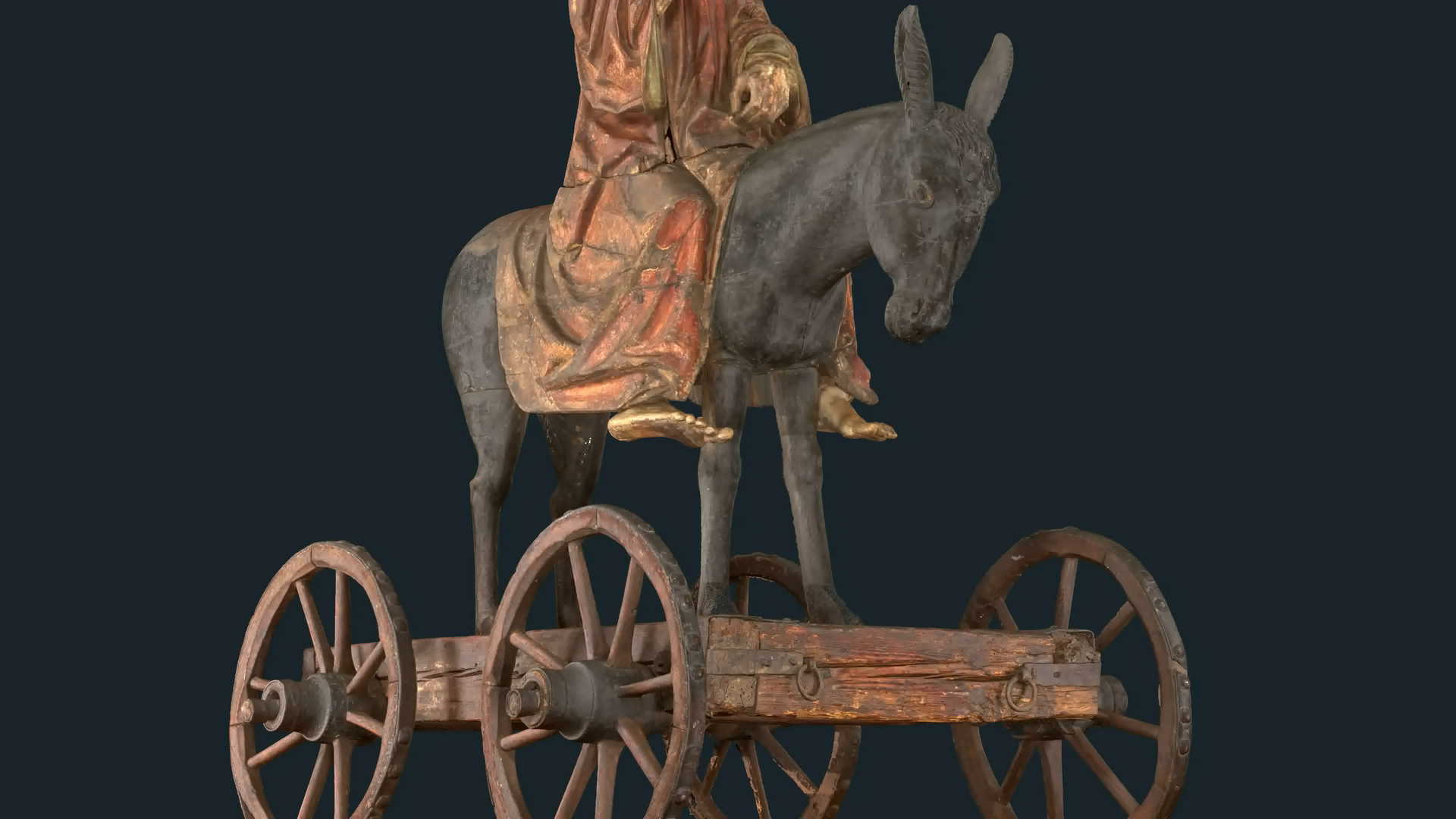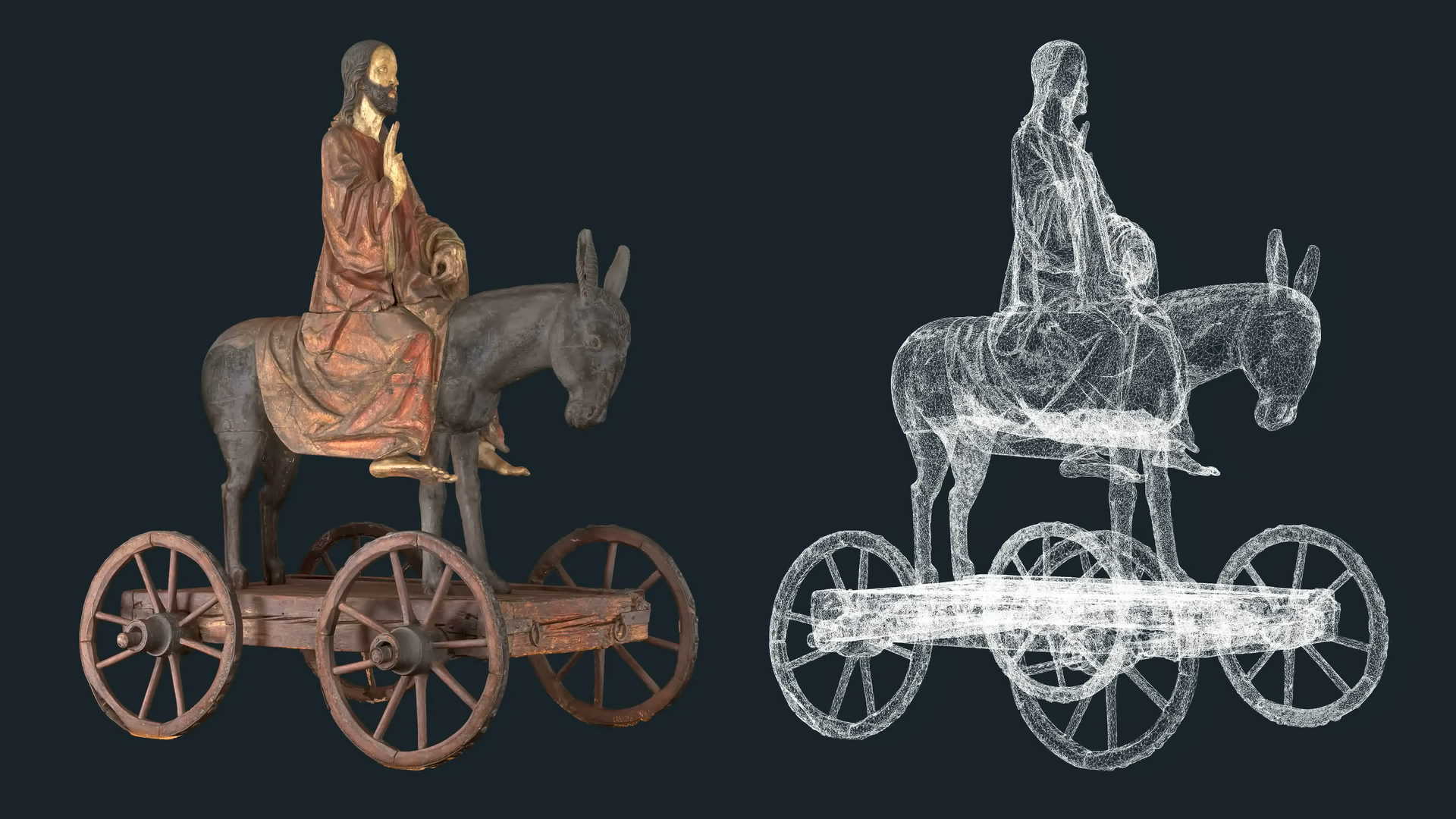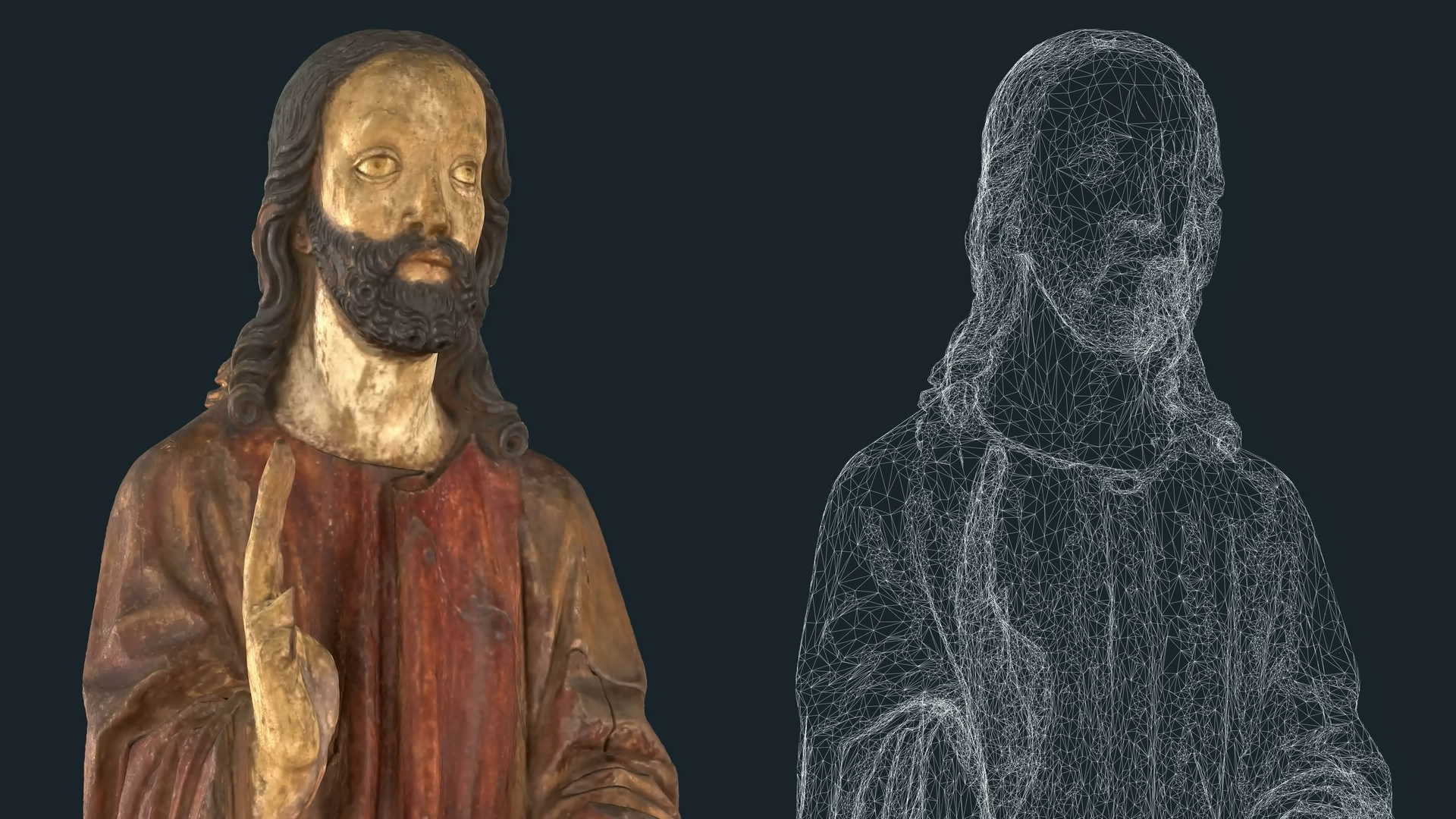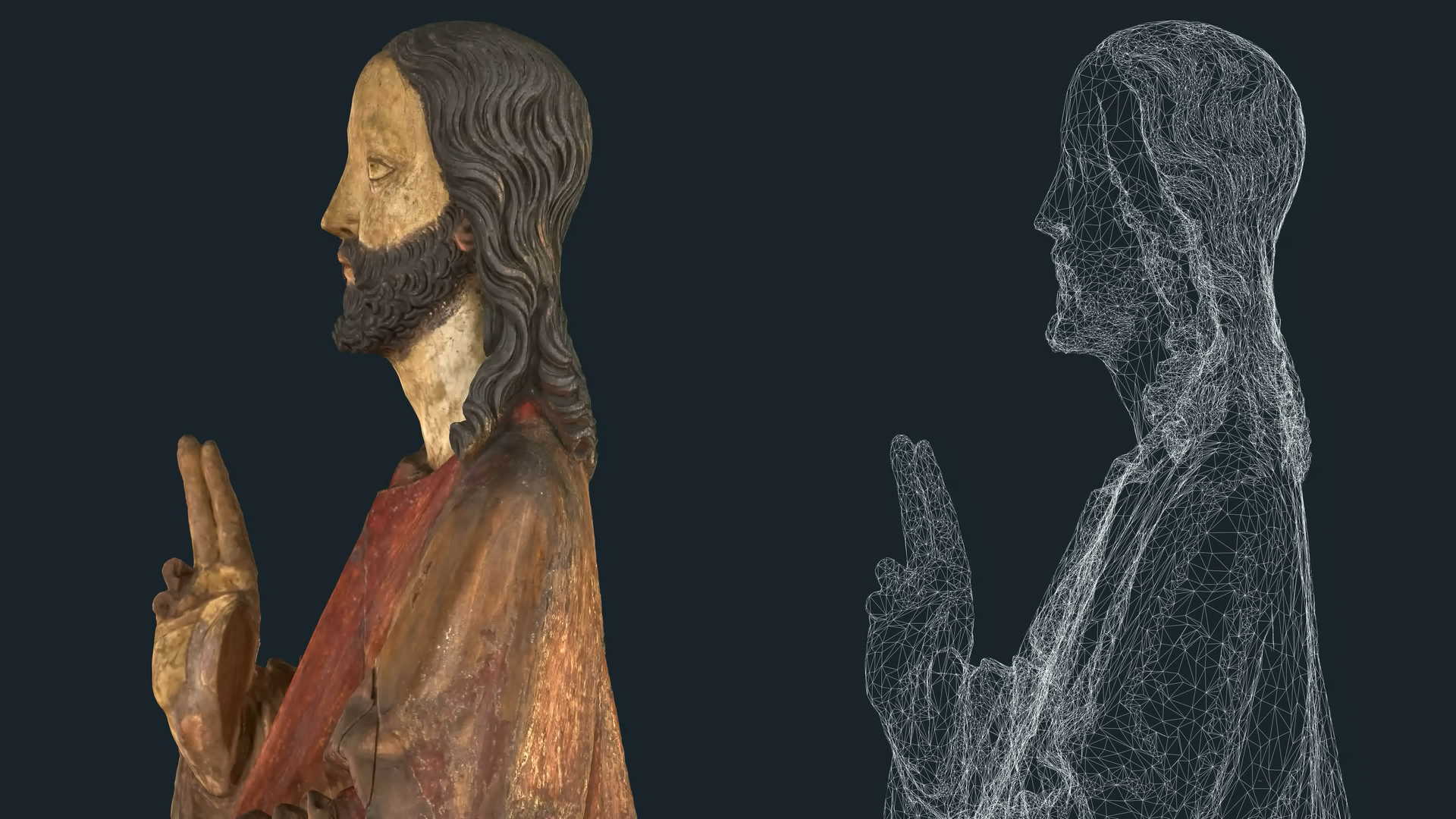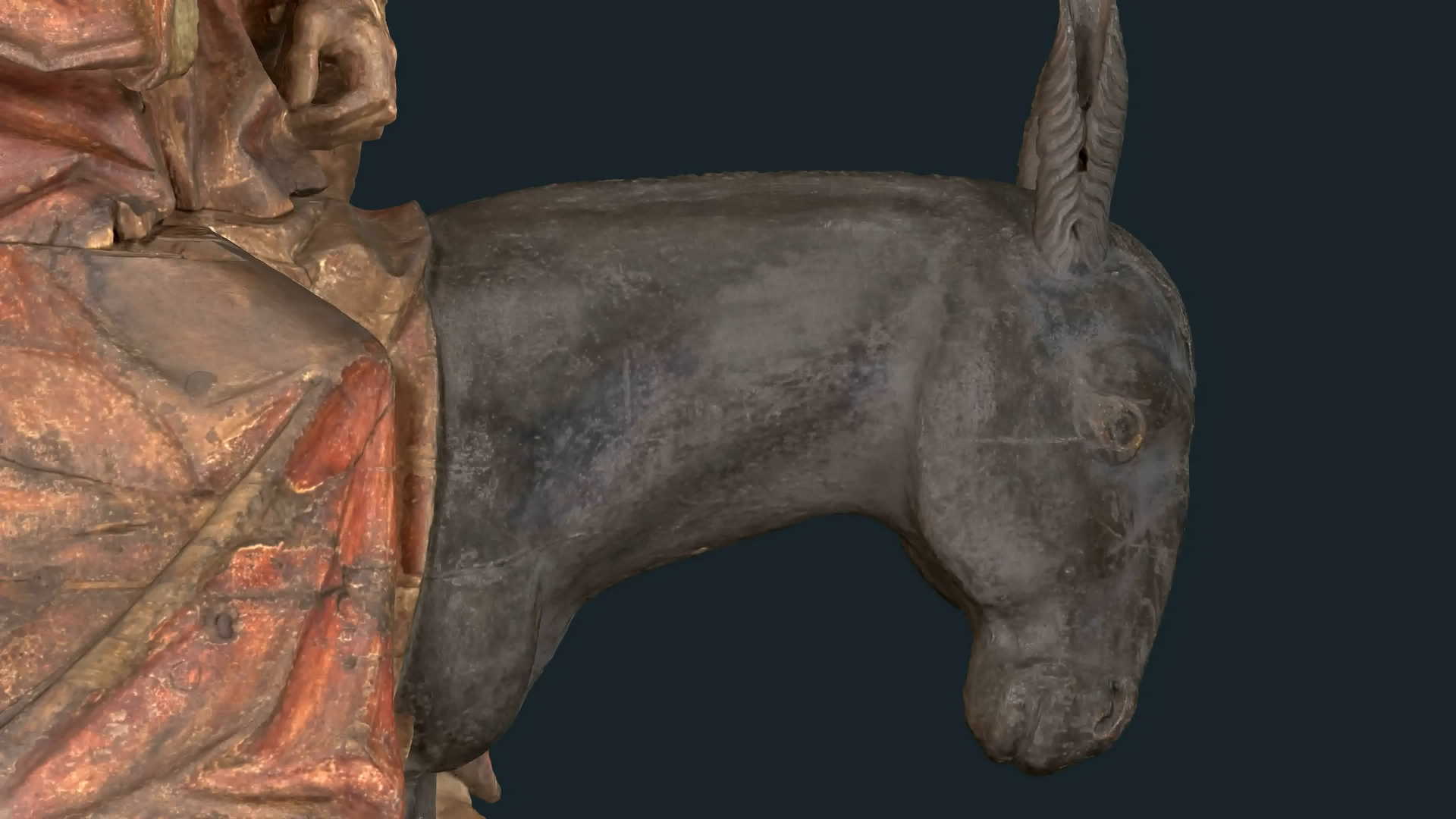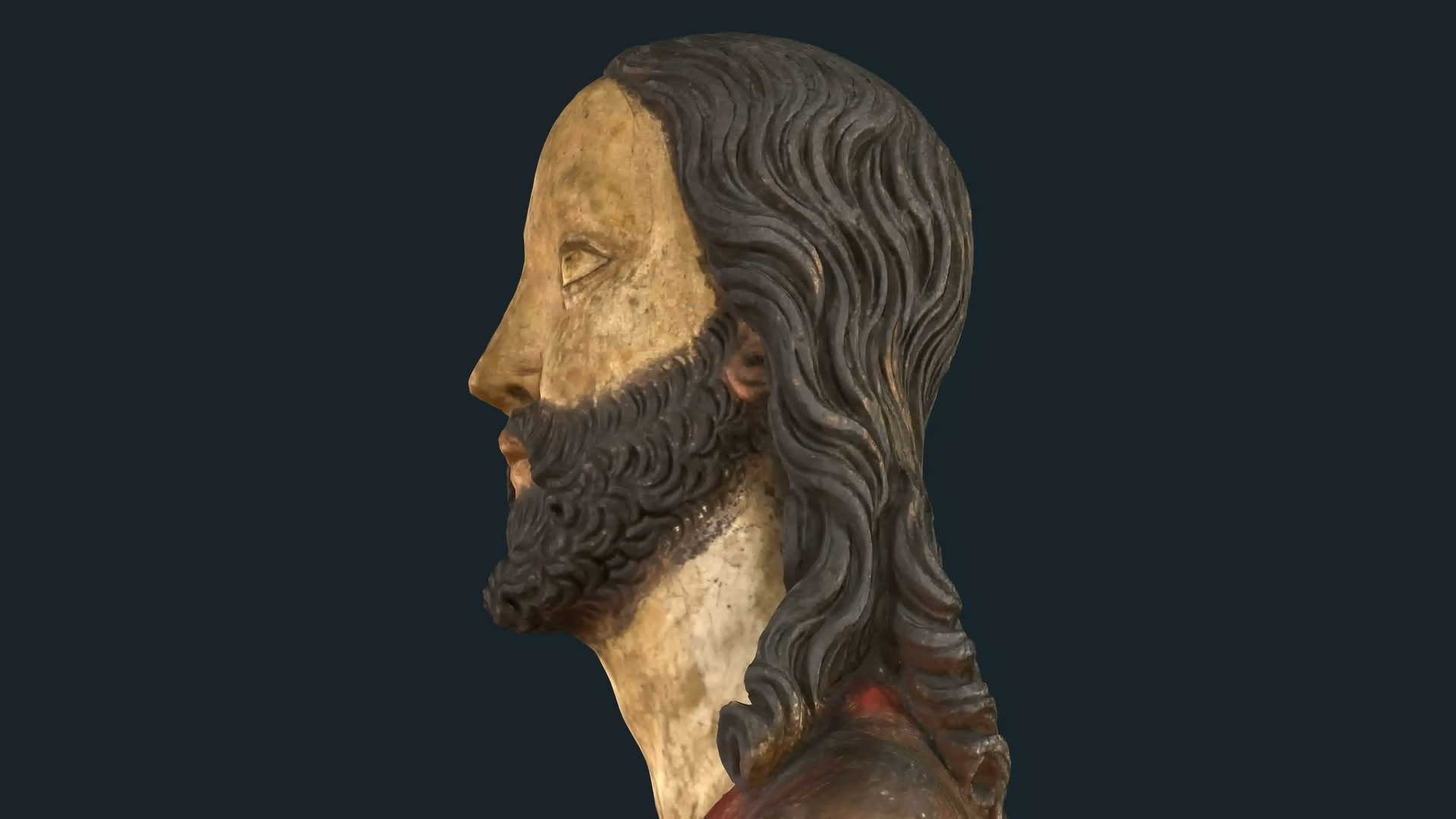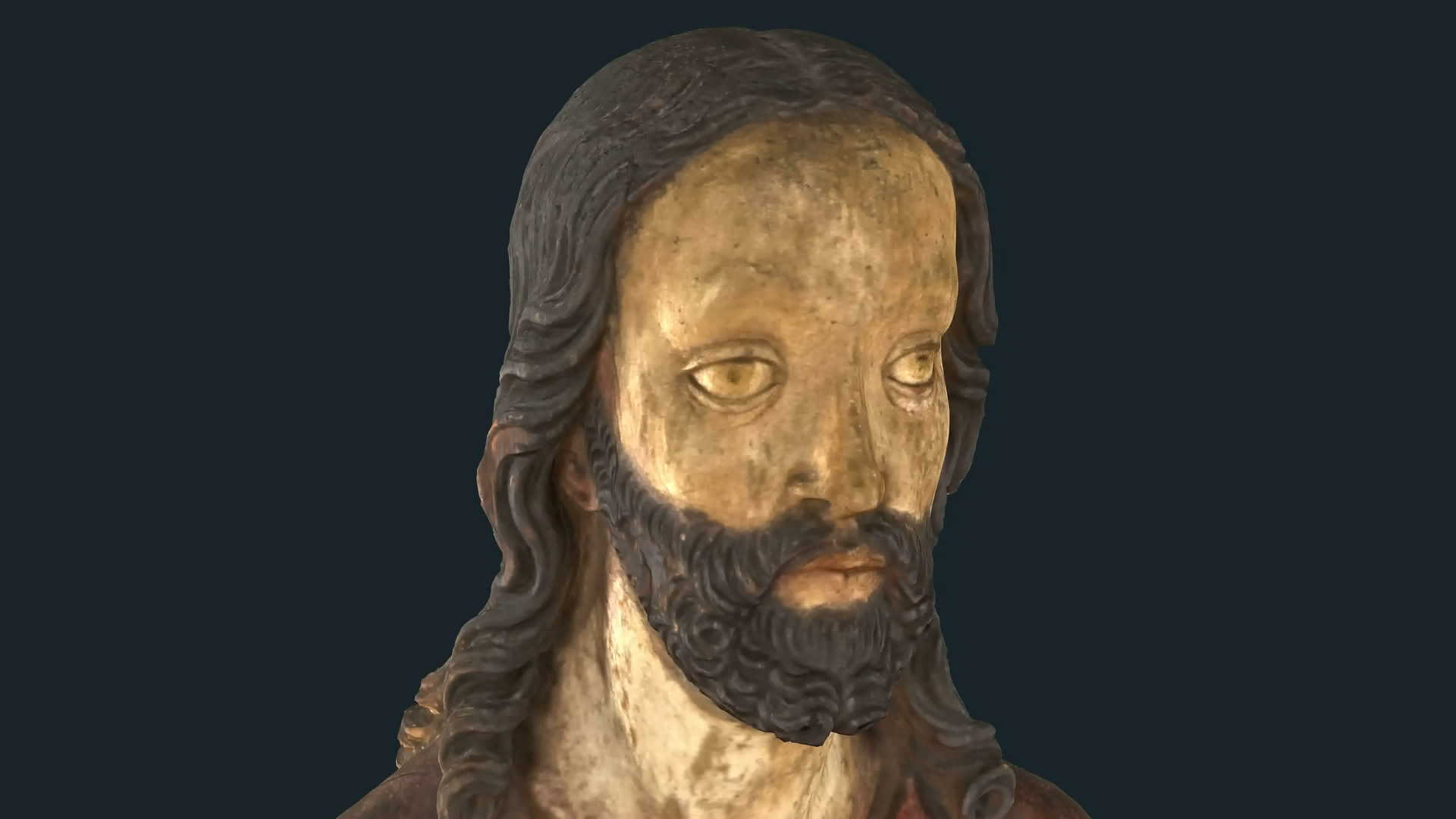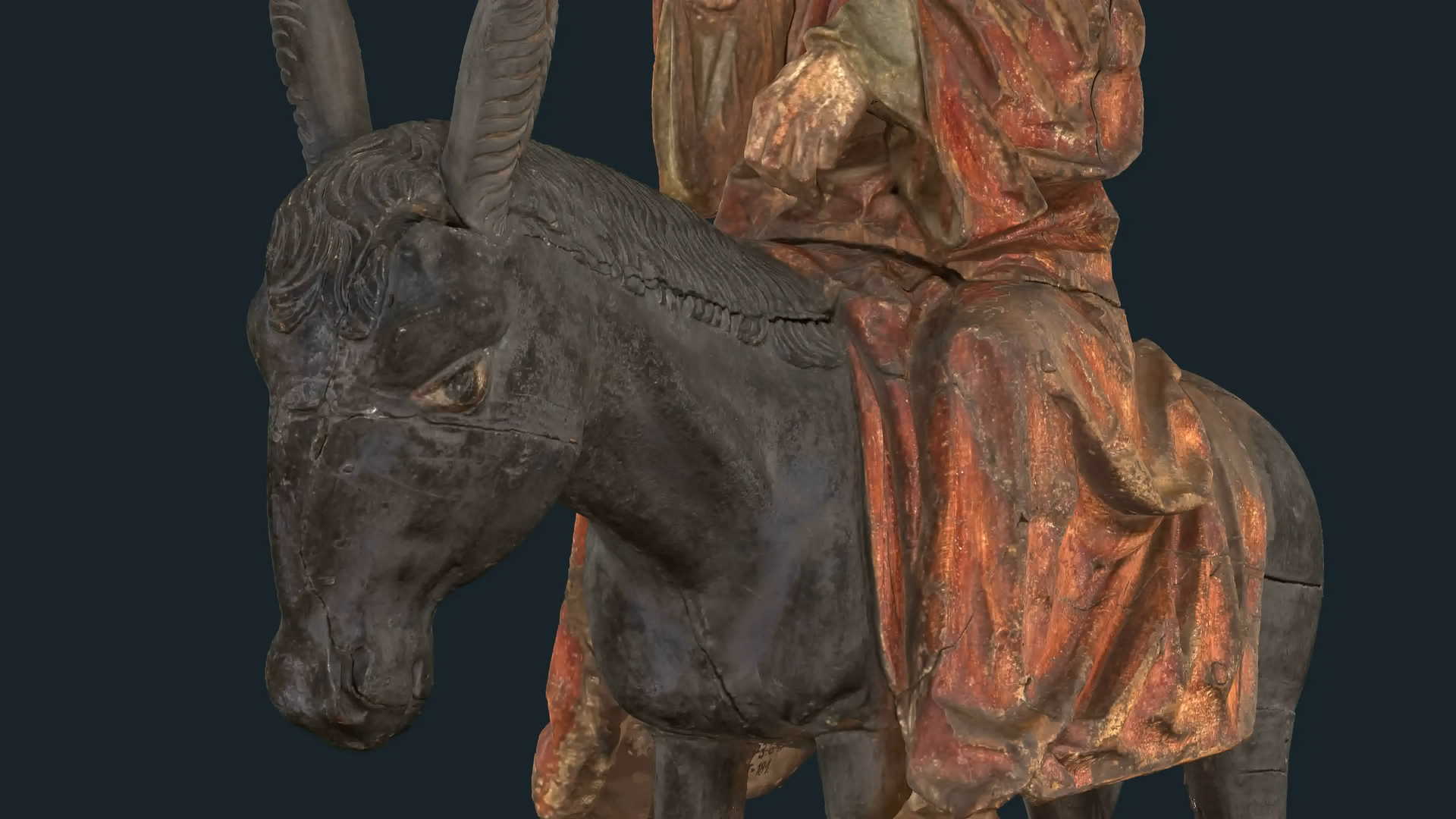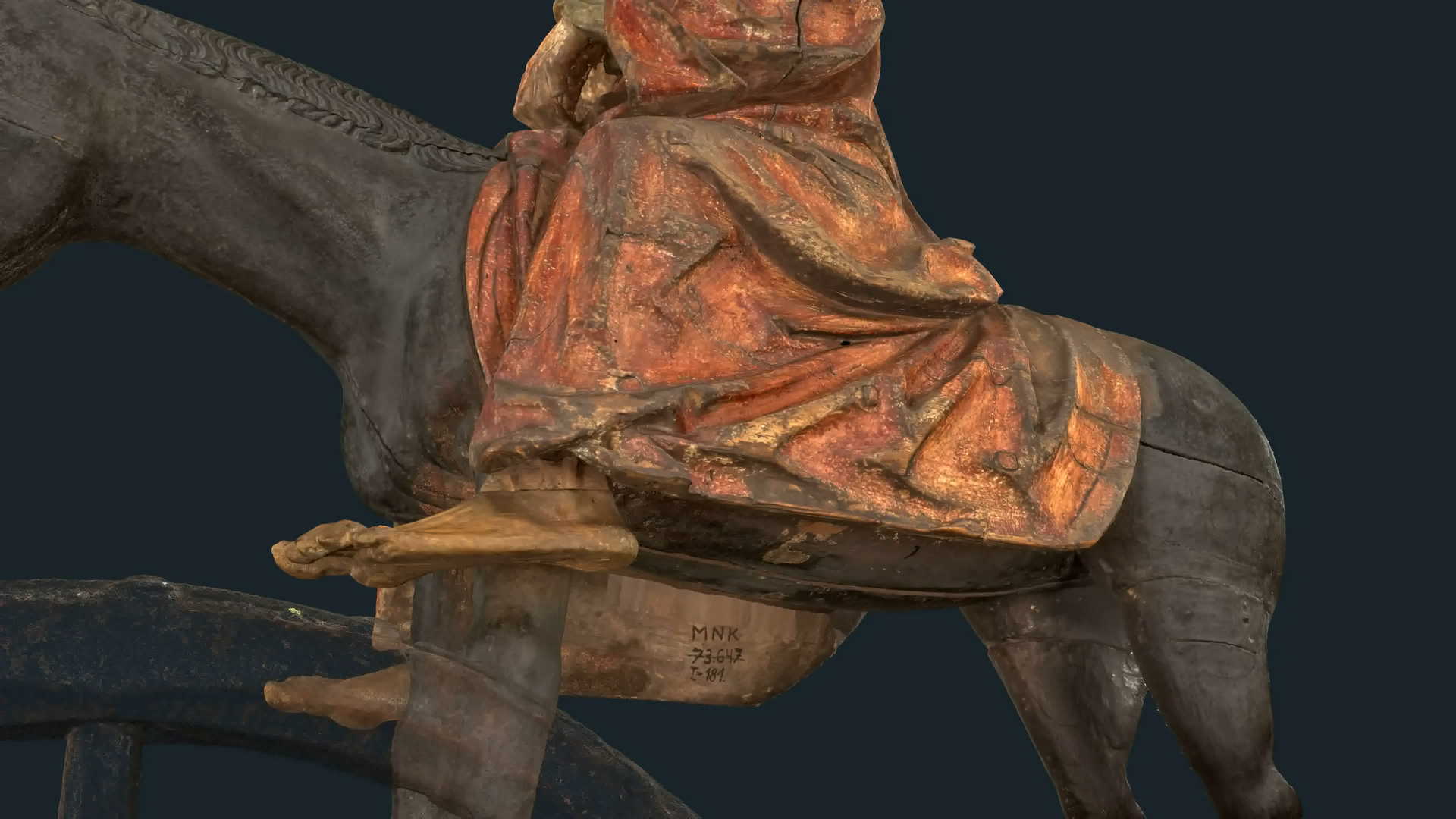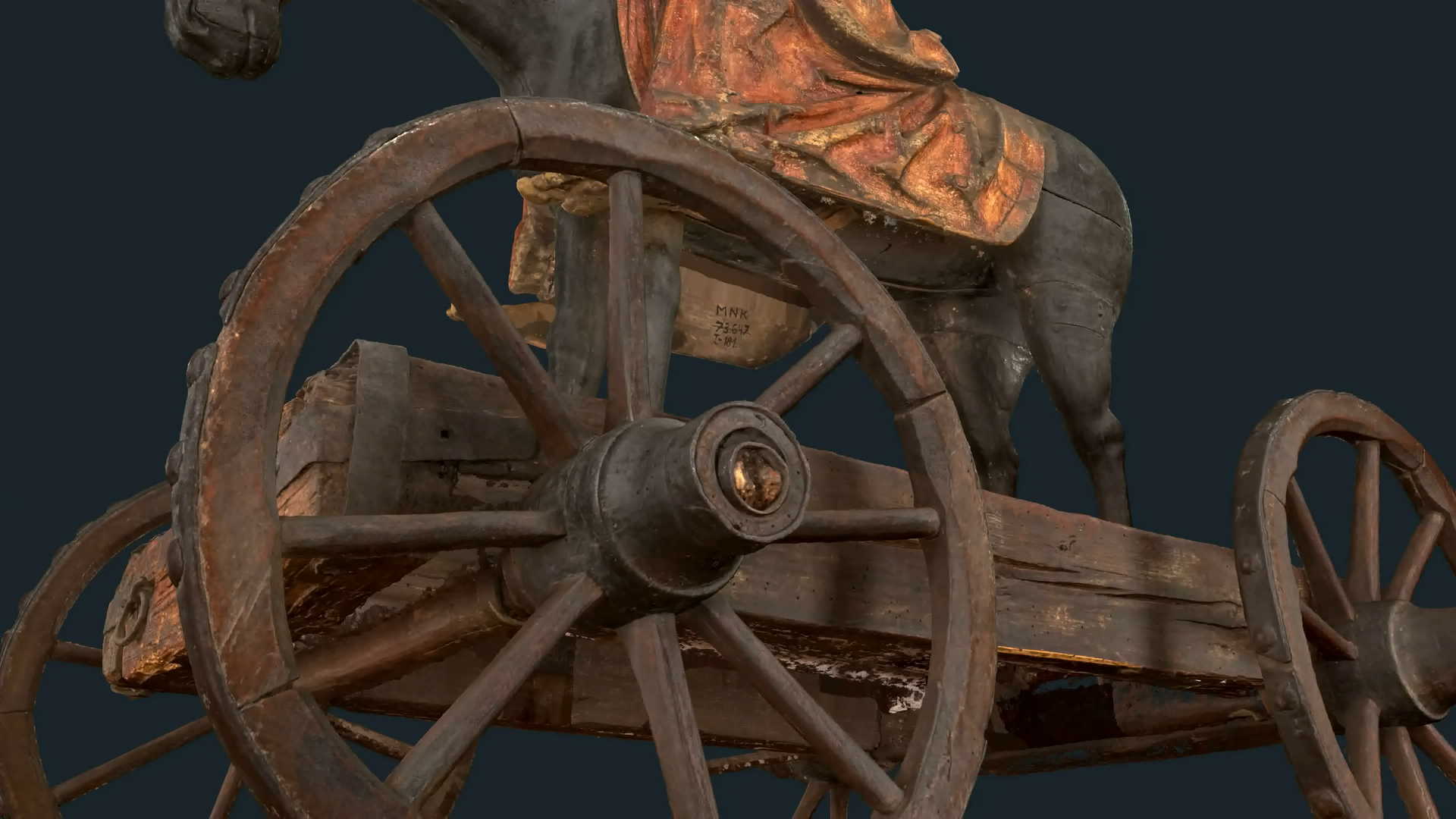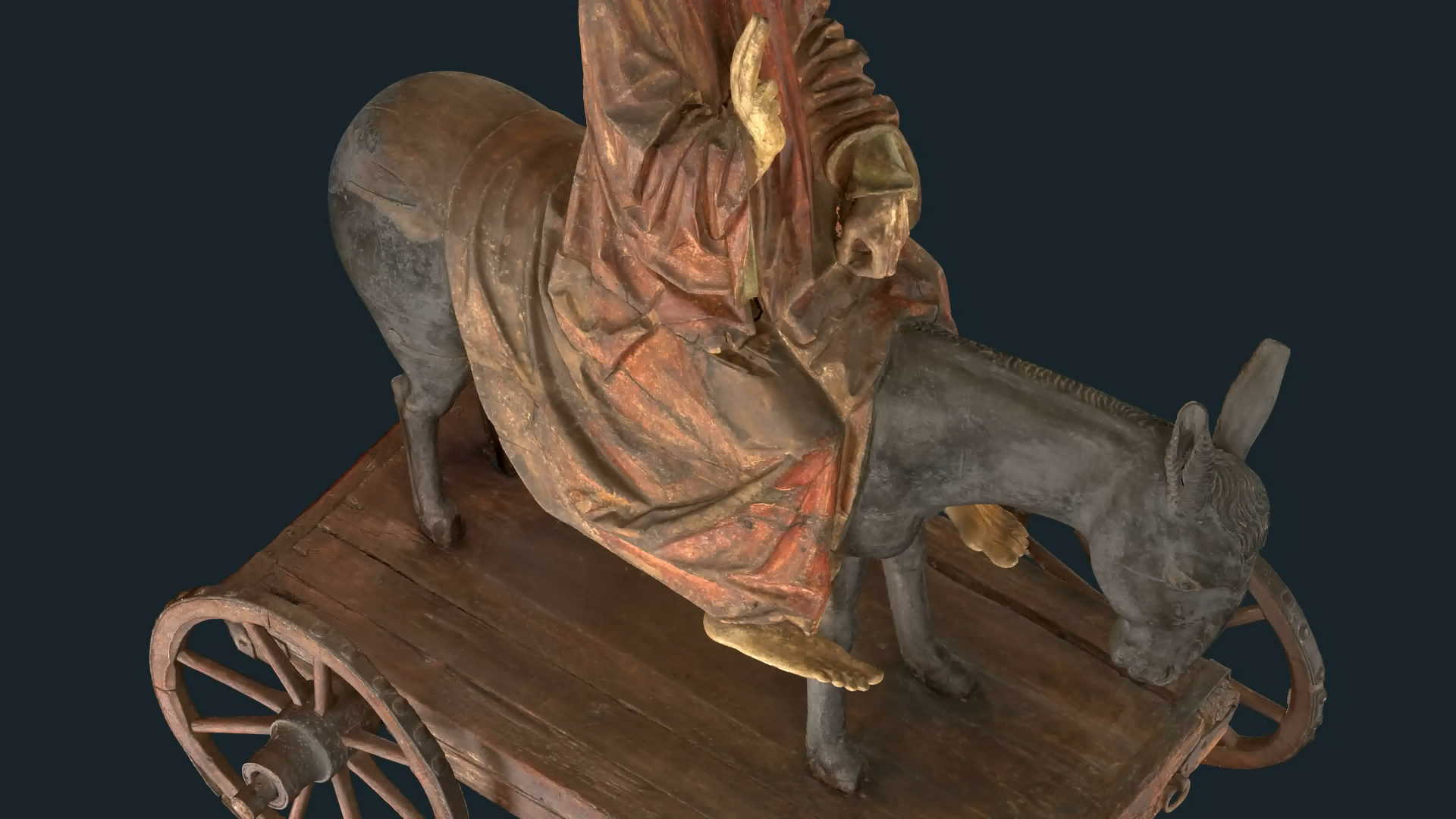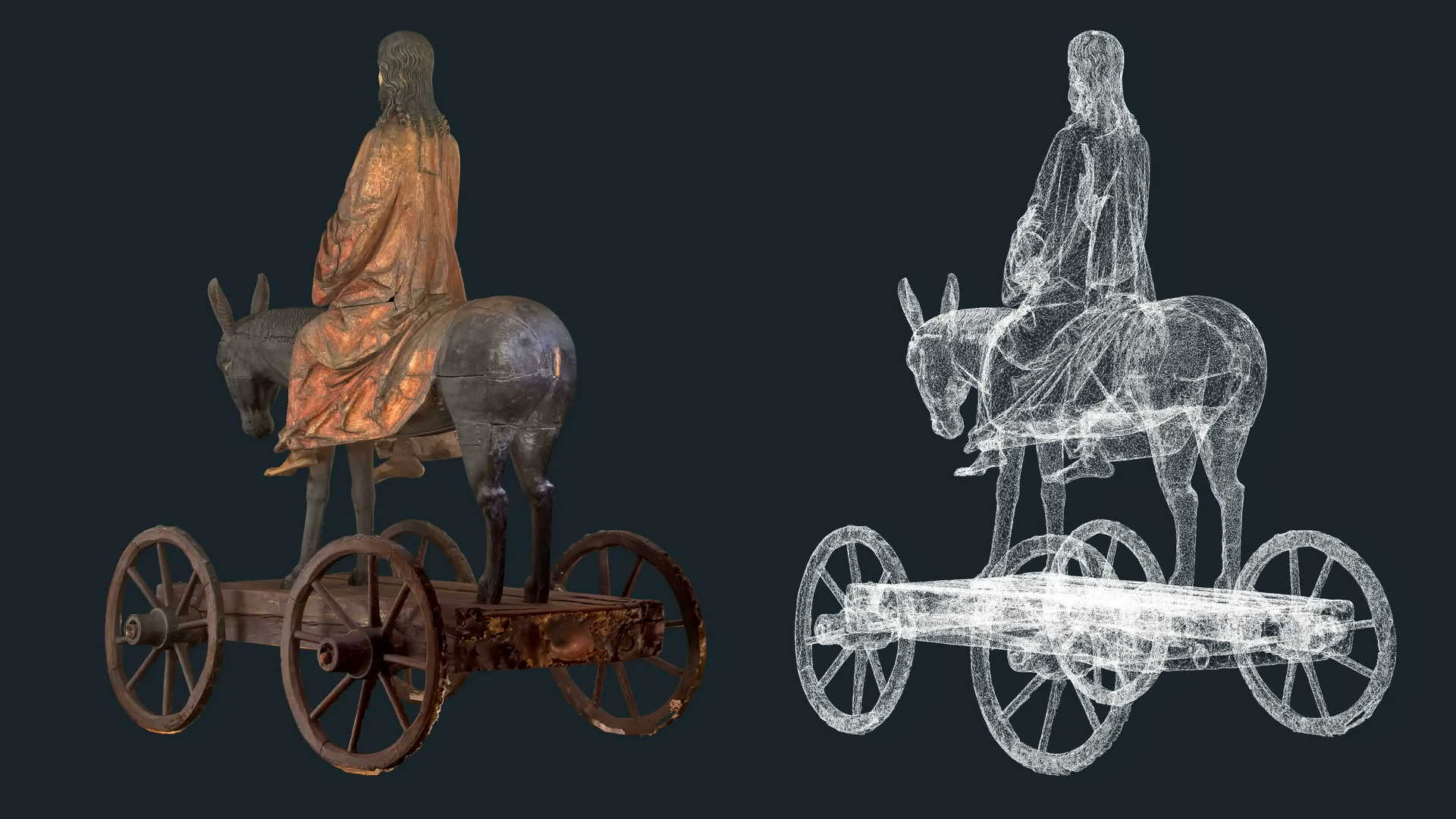Christ on a Donkey from the parish church
of Saint Sigismund in Szydłowiec
Author: Author unknown
Date of creation: between 1501 and 1525
Dimensions: figure of Christ: height 88 cm, width 39 cm, depth 46.5 cm, figure of a donkey: height 121 cm, width 165 cm, depth 57 cm, platform: length 150 cm, width 114 cm
Technique: wood sculpture, painted with tempera paints with metal elements
The sculpture depicts Christ sitting on a donkey. The figure is placed on an original cart from the same era. It has the form of a platform with four wheels. Jesus has long brown hair and a beard. His figure is wrapped in a red cloak. From under the cloak poke out his bare feet. He rides bareback, with no saddle, sitting astride on the animal. The figure of the donkey and the platform are painted brown. The surface of the object is full of unevenness and discolouration. In several places there is damage and chipping. There are also visible gaps at the joints of the elements of the figures made of separate pieces of wood. The sculpture was used during Palm Sunday processions. In the museum, it is placed on a low wooden pedestal.
Christ’s dark, curly hair falls over his shoulders. His slim figure stands straight. His long face with large eyes is turned forward. The voluminous cloak flows in numerous folds to Christ’s ankles.
From the wide sleeves poke out hands with long fingers. The forearm of the right hand, bent at the elbow, is raised upwards, with the hand in a gesture of blessing. The index and middle fingers are raised, while the others touch the palm. The latter have been broken off. Christ holds the palm of his lowered left hand just above the donkey’s back. The fingers are curled in as if they were holding reins.
The donkey stands on straight legs with hooves. Its long neck and head are slightly bent. They form an almost horizontal line with its back. Its long ears stick up.
The platform is made of thick beams. It has wooden wheels with metal rims. At the front of the platform, there are metal rings attached to the side of the beams. They were used to thread a rope through, allowing to pull the cart during a procession.

